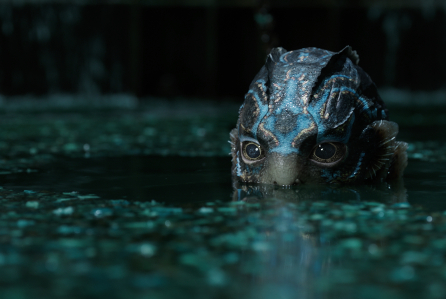5 Screenwriting Lessons from Guillermo del Toro & "The Shape of Water"
Originally published on WeScreenplay.com
It’s that time again — the slight down period between awards seasons when we take stock of what can be learned from the past year’s worth of movies. Naturally, close attention should be paid to Guillermo del Toro’s The Shape of Water, the awards darling that took home the top prize in the industry just over a month ago.
The Best Picture-winning flick may be a simple enough fairytale story — girl meets fish-man, girl falls in love with fish-man, girl must help fish-man escape captivity — but there’s plenty to be learned from del Toro’s screenplay.
USE YOUR SCREENPLAY TO ANSWER NAGGING QUESTIONS
Saying that Guillermo del Toro makes monster movies completely misses the mark. Guillermo del Toro makes movies about relationships, misunderstood people, and a whole host of other human issues — they just happen to be movies that feature monsters.
Del Toro has been obsessed with monsters since he was a child, and that obsession has led him to ponder many a question about human nature. One such question: Can a human being fall in love with a monster? After over two decades in the movie industry, del Toro was finally able to tackle that question in his Best Picture-winning The Shape of Water.
This tactic — using his screenplays to answer questions — imbues more meaning into his stories and, ultimately, makes them more memorable and relatable than your run-of-the-mill monster flick.
MAKE YOUR ANTAGONIST COMPELLING
Let’s consider Michael Shannon’s character in The Shape of Water. In a movie from another decade, Strickland may well have been the hero. Instead, del Toro made him the antagonist.
This is an important distinction — for the antagonist isn’t always a villain. By definition, the antagonist is simply the force that opposes the protagonist.
In an interview with the Beat, del Toro shared:
“The idea of the movie is that we need to look at the ‘other’ and not fear the ‘other,’ and that is embodied by the creature. But I cannot help but think that if we apply that rule to the creature and the protagonist, you have to apply that rule to the antagonist. So, I wanted to at least give the audience the opportunity to understand what makes him tick, what makes him have his resentment, or what makes him feel pressure, and why his goals need to be achieved in a position to the goals of the protagonist.”
When del Toro created an antagonist who was just as developed and well rounded as his protagonist and supporting cast, his story became richer and more honest. After all, in real life, even antagonists have their own motivations and backstories.
GIVE YOUR CHARACTERS A DISADVANTAGE
Elisa is mute, the Creature cannot speak at all, and Zelda and Giles are both part of minority groups in the 1960s — they all have some kind of disadvantage with communication.
In an interview with NPR, del Toro explained that The Shape of Water is about connecting with the “other” and the idea of empathy. Thus, the very issue of communication becomes both a plot device and a lesson for the audience to prove del Toro’s point, if you will. Through the course of the film, each character must find their voice — either figuratively or literally.
By giving his characters a flaw or disadvantage of some kind, del Toro inherently creates challenges for them to overcome over the course of the story. And by cherry-picking those disadvantages to serve his particular story, he creates deeper meaning by the conclusion of the film.
CHOOSE THE WHEN AND WHERE CAREFULLY
The Shape of Water is set in 1962 Baltimore, right smack in the middle of the Cold War. Tensions are high, minorities are mistreated, and the ideas of “nuclear families” and a utopia in suburbia run rampant.
Cue del Toro. He chose the setting of his Oscar-winning drama with intent, abiding by Hitchcock’s mantra: “A movie that happens everywhere matters nowhere.” America in 1962 may seem idealistic in retrospect, but that’s exactly the point.
“America will change the year after Kennedy is shot and the war is culminating in Vietnam, and it’s almost the inset of the skepticism,” del Toro explained to the Beat. “It’s a perfect place to set a ‘once upon a time’ fairytale because underneath all this harmony there is the great division, racial prejudice, gender discrimination, all the problems that we have alive today were alive back then.”
Be intentional and careful when choosing the setting of your screenplay — it should both reflect and enhance your story as a whole.
FIND YOURSELF IN THE STORY
Even in a movie about a monster, it’s essential that you relate to some character, element, or aspect of the story. Del Toro would know — he’s said over and over again that The Shape of Water was his most personal movie yet.
“We tell stories because we have a hollow place in our heart,” he said to Fast Company. “You don’t fill that with success. You fill it by finding yourself in the stories you tell.”
So go forth and find yourself in the story, then write the heck out of your screenplay. The monsters are optional.
I do not own any of the images featured in this post.




